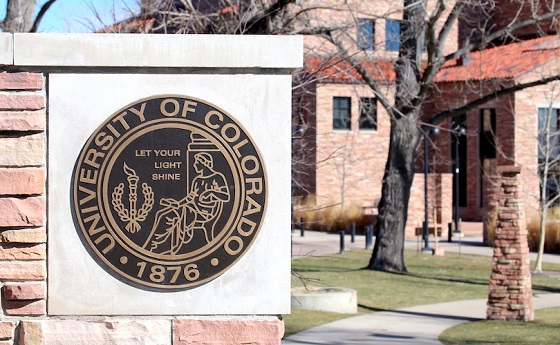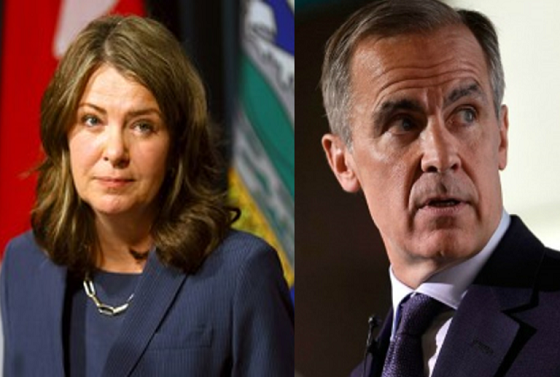Frontier Centre for Public Policy
Let’s get the facts on the graves, with a public inquiry
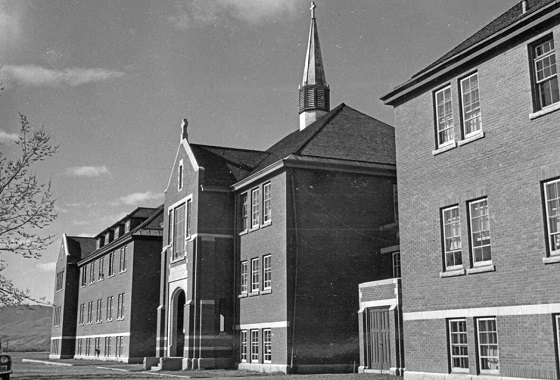
From the Frontier Centre for Public Policy
Canada needs a public inquiry into what has become known as “The Kamloops Graves Hoax”.
The May 27, 2021 claim of the Kamloops Indian band was that “human remains” were found in the apple orchard area of the former Kamloops Indian Residential School, resulting in what has been described both as a “national hysteria” and a “moral panic”. The band subsequently extended the claim to include other even more graphic terms, such as “bodies”, “graves” and even “mass graves”. Emotional articles and books followed.
In a press release issued three years after those sensational claims were made, their chief, Roseanne Casimir, has finally admitted the truth – there were no “human remains”, “bodies” “graves” or “mass graves” found at Kamloops.
Only “soil anomalies” were detected. Those anomalies could just as easily be tree roots, rocks, or the result of any of the other previous excavations that had been done in that same area. (As it happens there was a previous excavation in the area that was apparently missed by the radar operator. It is almost certain that it was soil anomalies from a 1924 excavation that her radar detected.)
Those 2021 false claims sent the nation into a panic. There is no need to describe in detail the flag-lowering, church-burning shock and frenzy that spread like wildfire through national and international media, brought the ailing Pope to Canada, convinced shamed MPs to condemn their own country as genocidal, vote in regressive UNDRIP and other incredibly expensive legislation, and spend what will be billions of dollars on a futile search for “missing children” who never existed. Many fine writers, including Terry Glavin, have described these strange last three years.
That episode of national hysteria is now an embarrassing part of Canada’s history.
A legitimate question to ask is why the Kamloops band made those false claims.
Chief Casimir said that they were based on Sarah Beaulieu’s report.
“But it would be shockingly unprofessional for a ground penetrating radar operator (GPR) to claim that graves had been found before excavation had taken place. It is well known that GPR can detect only soil anomalies or disturbances. It cannot detect “graves” or “human remains”. A simple Google search of the question “Can ground penetrating radar detect graves?” is all that is necessary to find that answer.
It therefore seems highly unlikely that Beaulieu would have made such a reckless claim. Almost certainly, Beaulieu properly reported only that soil disturbances, anomalies or reflections – that might be graves — were detected, and that excavation would be necessary to determine whether or not those disturbances were graves, or any of the hundreds of other possibilities.
But the answer to precisely what Beaulieu said can only be found by reading her report. And that is currently impossible, because the band is refusing to release the report. This is odd, because they had initially promised to release it, and only later reneged on that promise. They are are now steadfastly refusing to let the public see it.
The only reasonable explanation for this refusal is that they have something to hide – specifically that their claim of “graves” found was a claim they knew was false when they made it. Beaulieu’s report almost certainly did not say that graves had been found.
But on the strength of what appears to be a lie they made an application to the federal government for money to deal with what they said were “graves” containing the remains of 215 KIRS students – students they insisted had died under sinister circumstances, and were secretly buried by persons unknown, with the forced help of children – “as young as six”.
Exactly what representations the band made to the federal government in order to get the $8,000,000, or how the money was spent, is unknown, for the simple reason that both the band and the federal government have not released that information to the public.
Logic dictates that either Sarah Beaulieu, or Chief Roseanne Casimir, claimed that “graves” had been found, knowing that such information was false. Only one of them was telling the truth. $8,000,000 was obtained from the federal government on false information. Who made that false “grave” claim?
The Kamloops band refuses to release Beaulieu’s report – a report they initially promised to release. They are also refusing to provide any details about how the $8,000,000 was spent – despite not having put even one shovel in the ground. The RCMP is refusing to investigate anything involving the Kamloops claim, unless the Kamloops band requests their assistance. It is not likely that the band will ask the RCMP to investigate their own false claim. The federal government is refusing to release any details about the representations made by the band in order to obtain the $8,000,000.
And now, three years after that claim of “human remains” the Kamloops band has suddenly changed “remains” to exactly what they always were “anomalies”. They refuse to provide an explanation for that astounding reversal.
Meanwhile, there is absolutely no explanation from the Trudeau government about why they gave out millions of dollars of taxpayers’ money, and severely damaged Canada’s reputation at home and abroad, with a preposterous genocide confession, for allegations about secret graves that a simple Google search would have told them were false. There is also no explanation for the mainstream media’s failure to do that simple Google search, or ask even one obvious question about claims that were so highly improbable from the outset.
Hamlet’s “Something is rotten in the state of Denmark” quote is apt here.
Except the smell is coming straight from Kamloops and Ottawa.
Most Canadians now believe at least some version of the original claim that priests secretly buried indigenous children at Kamloops. One in five believe that priests actually murdered the children.
Life in Canada has been severely disrupted by the false claims made on May 27, 2021. Canada’s reputation has been badly damaged. Canadian schoolchildren are being falsely taught that their ancestors were genocidal racists.
We have now reached the absurd point where a Justice Minister of Canada has seriously considered criminalizing anyone asking legitimate questions about these secret burial claims, Canada’s Senate has recommended that even writing an article disputing the original May 27, 2021 Kamloops claim should be outlawed – apparently making not only this article – but even Casimir’s recent correction to “anomalies” illegal. This madness must end. Canadians deserve to know how things went so horribly wrong.
A public inquiry is the only way to clear the air, and get the country back on track.
Brian Giesbrecht, retired judge, is a senior fellow at the Frontier Centre for Public Policy.
Censorship Industrial Complex
Ottawa’s New Hate Law Goes Too Far
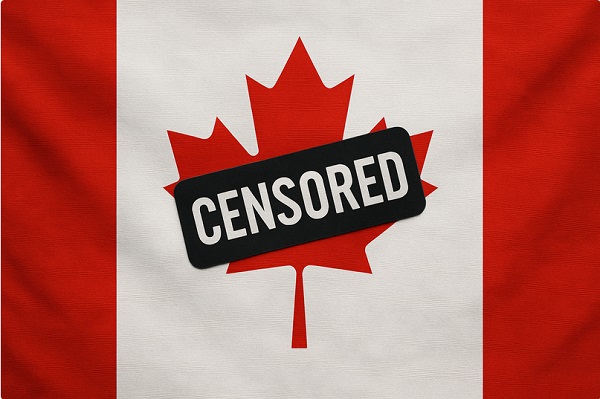
From the Frontier Centre for Public Policy
By Lee Harding
Ottawa says Bill C-9 fights hate. Critics say it turns ordinary disagreement into a potential crime.
Discriminatory hate is not a good thing. Neither, however, is the latest bill by the federal Liberal government meant to fight it. Civil liberties organizations and conservative commentators warn that Bill C-9 could do more to chill legitimate speech than curb actual hate.
Bill C-9 creates a new offence allowing up to life imprisonment for acts motivated by hatred against identifiable groups. It also creates new crimes for intimidation or obstruction near places of worship or community buildings used by identifiable groups. The bill adds a new hate propaganda offence for displaying terrorism or hate symbols.
The Canadian Civil Liberties Association (CCLA) warns the legislation “risks criminalizing some forms of protected speech and peaceful protest—two cornerstones of a free and democratic society—around tens of thousands of community gathering spaces in Canada.” The CCLA sees no need to add to existing hate laws.
Bill C-9 also removes the requirement that the Attorney General consent to lay charges for existing hate propaganda offences. The Canadian Constitution Foundation (CCF) calls this a major flaw, noting it removes “an important safeguard for freedom of expression that has been part of Canada’s law for decades.” Without that safeguard, decisions to prosecute may depend more on local political pressures and less on consistent national standards.
Strange as it sounds, hatred just will not be what it used to be if this legislation passes. The core problem begins with how the bill redefines the term itself.
Previously, the Supreme Court of Canada said hatred requires “extreme manifestations” of detestation or vilification that involve destruction, abhorrence or portraying groups as subhuman or innately evil. Instead, Bill C-9 defines hatred as “detestation or vilification,” stronger than “disdain or dislike.” That is a notably lower threshold. This shift means that ordinary political disagreement or sharp criticism could now be treated as criminal hatred, putting a wide range of protected expression at real risk.
The bill also punishes a hateful motivation more than the underlying crime. For example, if a criminal conviction prompted a sentence of two years to less than five years, a hateful motivation would add as much as an additional five years of jail time.
On paper, most Canadians may assume they will never be affected by these offences. In practice, the definition of “hate” is already stretched far beyond genuine threats or violence.
Two years ago, the 1 Million March for Children took place across Canada to protest the teaching of transgender concepts to schoolchildren, especially the very young. Although such opposition is a valid position, unions, LGBT advocates and even Newfoundland and Labrador Conservatives adopted the “No Space For Hate” slogan in response to the march. That label now gets applied far beyond real extremism.
Public pressure also shapes how police respond to protests. If citizens with traditional values protest a drag queen story hour near a public library, attendees may demand that police lay charges and accuse officers of implicit hatred if they refuse. The practical result is clear: officers may feel institutional pressure to lay charges to avoid being accused of bias, regardless of whether any genuine threat or harm occurred.
Police, some of whom take part in Pride week or work in stations decorated with rainbow colours in June, may be wary of appearing insensitive or intolerant. There have also been cases where residents involved in home invasion incidents were charged, and courts later determined whether excessive force was used. In a similar way, officers may lay charges first and allow the courts to sort out whether a protest crossed a line. Identity-related considerations are included in many workplace “sensitivity training” programs, and these broader cultural trends may influence how such situations are viewed. In practice, this could mean that protests viewed as ideologically unfashionable face a higher risk of criminal sanction than those aligned with current political priorities.
If a demonstrator is charged and convicted for hate, the Liberal government could present the prosecution as a matter for the justice system rather than political discretion. It may say, “It was never our choice to charge or convict these people. The system is doing its job. We must fight hate everywhere.”
Provincial governments that support prosecution will be shielded by the inability to show discretion, while those that would prefer to let matters drop will be unable to intervene. Either way, the bill could increase tensions between Ottawa and the provinces. This could effectively centralize political authority over hate-related prosecutions in Ottawa, regardless of regional differences in values or enforcement priorities.
The bill also raises concerns about how symbols are interpreted. While most Canadians would associate the term “hate symbol” with a swastika, some have linked Canada’s former flag to extremism. The Canadian Anti-Hate Network did so in 2022 in an educational resource entitled “Confronting and preventing hate in Canadian schools.”
The flag, last used nationally in 1965, was listed under “hate-promoting symbols” for its alleged use by the “alt-right/Canada First movement” to recall when Canada was predominantly white. “Its usage in modern times is an indicator of hate-promoting beliefs,” the resource insisted. If a historic Canadian symbol can be reclassified this easily, it shows how subjective and unstable the definition of a “hate symbol” could become under this bill.
These trends suggest the legislation jeopardizes not only symbols associated with Canada’s past, but also the values that supported open debate and free expression. Taken together, these changes do not merely target hateful behaviour. They create a legal framework that can be stretched to police dissent and suppress unpopular viewpoints. Rest in peace, free speech.
Lee Harding is a research fellow for the Frontier Centre for Public Policy.
Business
Canada Can Finally Profit From LNG If Ottawa Stops Dragging Its Feet

From the Frontier Centre for Public Policy
By Ian Madsen
Canada’s growing LNG exports are opening global markets and reducing dependence on U.S. prices, if Ottawa allows the pipelines and export facilities needed to reach those markets
Canada’s LNG advantage is clear, but federal bottlenecks still risk turning a rare opening into another missed opportunity
Canada is finally in a position to profit from global LNG demand. But that opportunity will slip away unless Ottawa supports the pipelines and export capacity needed to reach those markets.
Most major LNG and pipeline projects still need federal impact assessments and approvals, which means Ottawa can delay or block them even when provincial and Indigenous governments are onside. Several major projects are already moving ahead, which makes Ottawa’s role even more important.
The Ksi Lisims floating liquefaction and export facility near Prince Rupert, British Columbia, along with the LNG Canada terminal at Kitimat, B.C., Cedar LNG and a likely expansion of LNG Canada, are all increasing Canada’s export capacity. For the first time, Canada will be able to sell natural gas to overseas buyers instead of relying solely on the U.S. market and its lower prices.
These projects give the northeast B.C. and northwest Alberta Montney region a long-needed outlet for its natural gas. Horizontal drilling and hydraulic fracturing made it possible to tap these reserves at scale. Until 2025, producers had no choice but to sell into the saturated U.S. market at whatever price American buyers offered. Gaining access to world markets marks one of the most significant changes for an industry long tied to U.S. pricing.
According to an International Gas Union report, “Global liquefied natural gas (LNG) trade grew by 2.4 per cent in 2024 to 411.24 million tonnes, connecting 22 exporting markets with 48 importing markets.” LNG still represents a small share of global natural gas production, but it opens the door to buyers willing to pay more than U.S. markets.
LNG Canada is expected to export a meaningful share of Canada’s natural gas when fully operational. Statistics Canada reports that Canada already contributes to global LNG exports, and that contribution is poised to rise as new facilities come online.
Higher returns have encouraged more development in the Montney region, which produces more than half of Canada’s natural gas. A growing share now goes directly to LNG Canada.
Canadian LNG projects have lower estimated break-even costs than several U.S. or Mexican facilities. That gives Canada a cost advantage in Asia, where LNG demand continues to grow.
Asian LNG prices are higher because major buyers such as Japan and South Korea lack domestic natural gas and rely heavily on imports tied to global price benchmarks. In June 2025, LNG in East Asia sold well above Canadian break-even levels. This price difference, combined with Canada’s competitive costs, gives exporters strong margins compared with sales into North American markets.
The International Energy Agency expects global LNG exports to rise significantly by 2030 as Europe replaces Russian pipeline gas and Asian economies increase their LNG use. Canada is entering the global market at the right time, which strengthens the case for expanding LNG capacity.
As Canadian and U.S. LNG exports grow, North American supply will tighten and local prices will rise. Higher domestic prices will raise revenues and shrink the discount that drains billions from Canada’s economy.
Canada loses more than $20 billion a year because of an estimated $20-per-barrel discount on oil and about $2 per gigajoule on natural gas, according to the Frontier Centre for Public Policy’s energy discount tracker. Those losses appear directly in public budgets. Higher natural gas revenues help fund provincial services, health care, infrastructure and Indigenous revenue-sharing agreements that rely on resource income.
Canada is already seeing early gains from selling more natural gas into global markets. Government support for more pipelines and LNG export capacity would build on those gains and lift GDP and incomes. Ottawa’s job is straightforward. Let the industry reach the markets willing to pay.
Ian Madsen is a senior policy analyst at the Frontier Centre for Public Policy.
-

 Automotive2 days ago
Automotive2 days agoThe $50 Billion Question: EVs Never Delivered What Ottawa Promised
-

 Local Business2 days ago
Local Business2 days agoRed Deer Downtown Business Association to Wind Down Operations
-

 International2 days ago
International2 days agoTrump admin wants to help Canadian woman rethink euthanasia, Glenn Beck says
-

 C2C Journal2 days ago
C2C Journal2 days agoWisdom of Our Elders: The Contempt for Memory in Canadian Indigenous Policy
-

 Alberta2 days ago
Alberta2 days agoAlberta introducing three “all-season resort areas” to provide more summer activities in Alberta’s mountain parks
-

 Agriculture2 days ago
Agriculture2 days agoGrowing Alberta’s fresh food future
-

 Alberta2 days ago
Alberta2 days agoThe case for expanding Canada’s energy exports
-
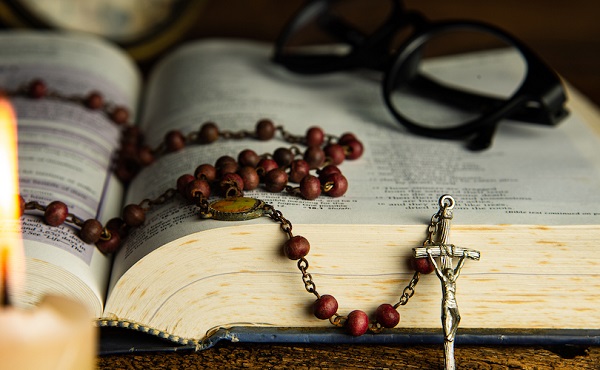
 Censorship Industrial Complex2 days ago
Censorship Industrial Complex2 days agoConservative MP calls on religious leaders to oppose Liberal plan to criminalize quoting Scripture





